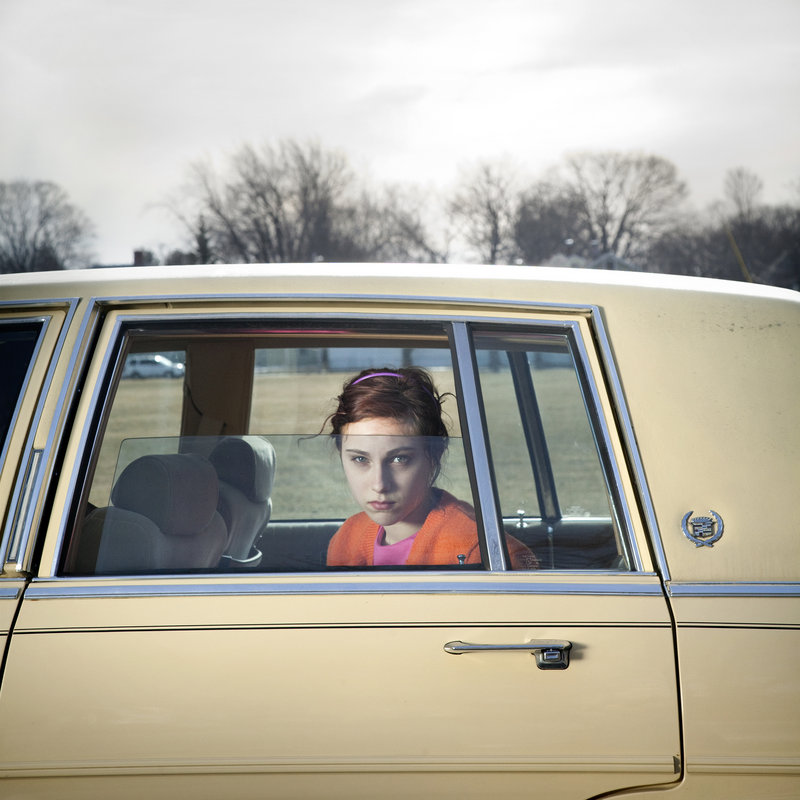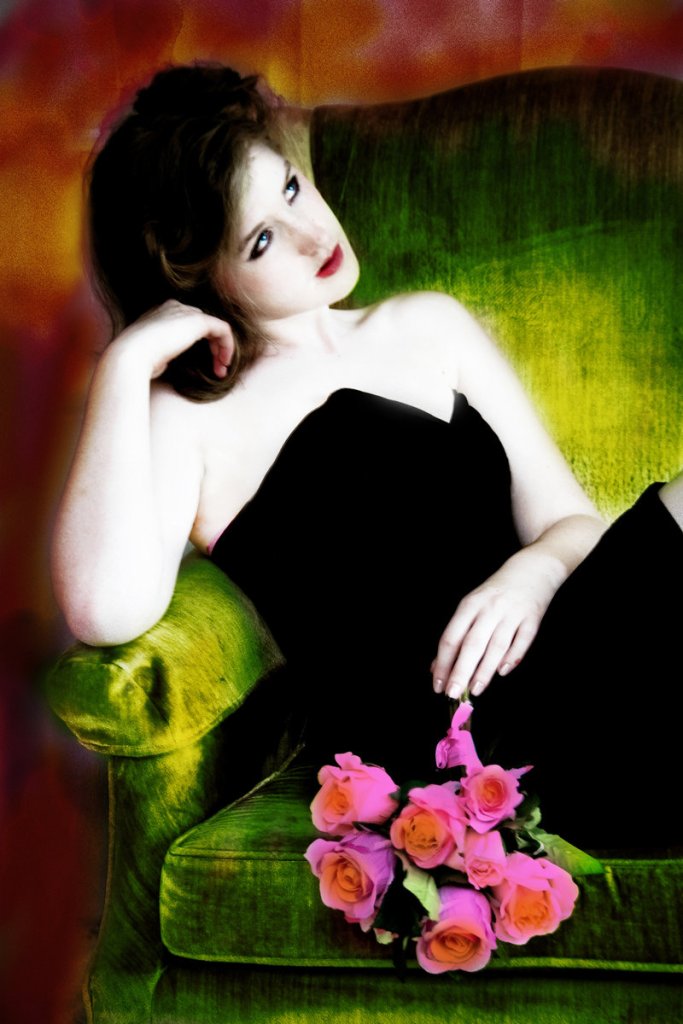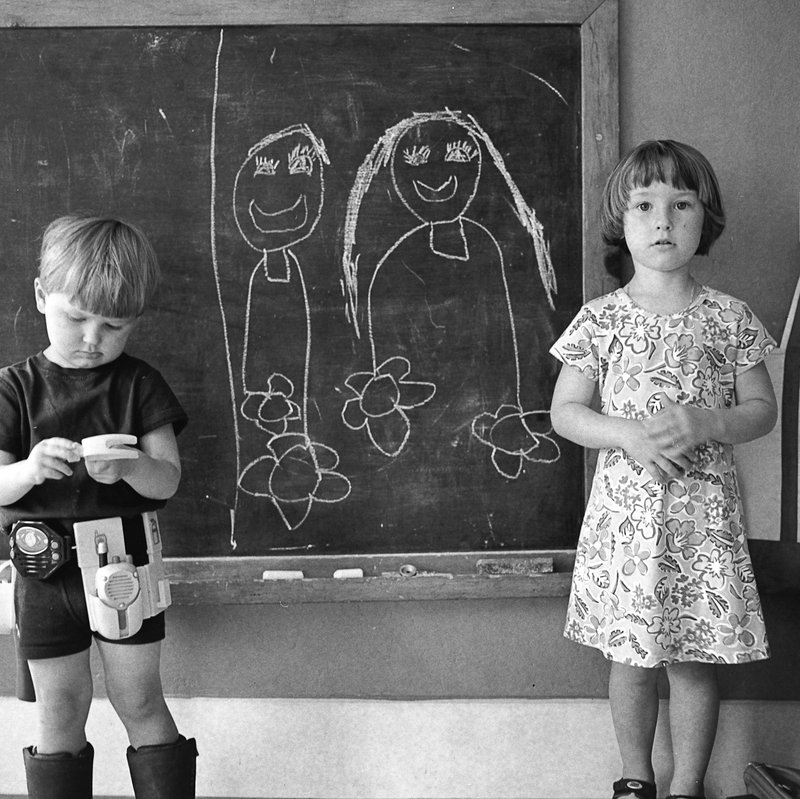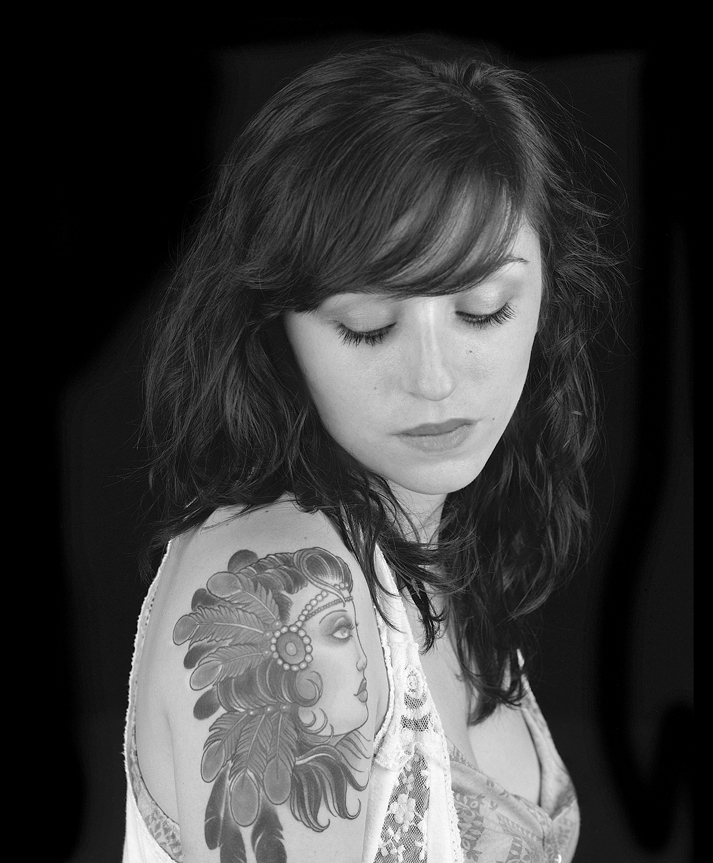GORHAM — Heather Frederick stands in front of Cig Harvey’s evocative image of a young girl staring out the window of the backseat of a Cadillac and says, “This is a picture you could look at every day the rest of your life. Every square inch is perfect.
“It’s iconic. Cig just has an eye. She sees the car, she sees the kid sitting in it, and she takes it. But the composition is perfect. Everything about it is perfect.”
The photograph, “The Pale Yellow Cadillac, Sadie,” is part of a group photography exhibition at the University of Southern Maine, “The Myths.” The new show features the work of a half-dozen female artists who explore gender in their work, and in doing so test society’s prescribed notions of how women are supposed to fit in and function. “The Myths” uses photography as a vehicle to explore gender myths, misconceptions and realities.
Harvey, who teaches at Lesley College in Massachusetts and lives in Camden, has a handful of big, beautiful images in this exhibition. She is joined by USM art professor Rose Marasco, New Hampshire artist Bev Conway, Portland photographer and USM alum Abigail Wellman, and Maine photographers Sharon Arnold and Amy Wilton. Also participating is USM artist-in-residence Jesseca Ferguson, who lives and works in Boston.
Ferguson will give a free public talk at 1 p.m. Friday at USM about her pinhole photographs and collaged photo objects.
The unifying theme of “The Myths” is its subject of women. Otherwise, this show is all about diversity, said Frederick, who curated the show and coordinated it with USM Art Gallery director Carolyn Eyler.
“The artists selected for ‘The Myths’ use the same alphabet in creating their works, but each uses a distinctly different vocabulary to execute her vision,” said Frederick, who operates the online gallery VoxPhotographs.
She cautions viewers about reading too much into the work, and instead encourages them to simply look at the images with an open mind and allow them time to seep in and settle.
“You can’t come here looking for a message. You come here to see art,” she said. “A lot of people look for a way in. The way in is to stand and study complex art. You’re not going to get something out of everybody’s work. I’m sure some might leave you cold, but you will connect with something.”
Harvey’s large color prints may be the most accessible in this show, though they also are among the most complex in terms of their composition. Her images suggest more questions than answers.
Who is the girl in the Caddy? How did she get there? Are her longing eyes that stare out the half-open window a plea for escape?
Harvey wants her work to help “create order out of chaos and beauty out of pain.” All those emotions are present at USM, particularly in the image of young Sadie in the back of the pale yellow Cadillac.
Marasco’s photographs are just as personal, but in a completely different way. For her “Interiors” series, she filled the private spaces of her West End Portland home with projections of glamorous and iconic females who represent society’s ideal standard.
Marasco’s work blends reality and myth, and invites the viewer to step into a typical domestic scene that is riddled with the visual pressure of unattainable, storybook standards.
Wellman outfits her female models with fantasy personalities. She dresses them up and places them in unlikely and unusual poses, as if to ask, “Who would you like to be today?” Her photographs are lush with color and detail, with every hair perfect, every garment just right and every flower fresh and pretty. She offers her subjects the chance to be immortalized by her camera.
Wilton’s photographs attempt to offer insight into domestic life. She combines her own experiences with the expectations she has for her children, and explores the role of gender through the toys, clothes, costumes and play routines of her son and daughter. Her photographs alternate between funny and heart-wrenching, and sometimes both emotions are present in a single image.
Arnold’s work may require the most brain space to process. Her photographs suggest three-dimensional compositions, because they are constructed from layers of imagery — objects and combinations of objects that are real and unreal, re-photographed and scanned, and built up into a final scene.
Her models take on the personality of historic figures: Arnold imagines Marilyn Monroe the night before she died or Jackie Onassis had she not taken that fateful limo ride in Dallas. Her work begs the question, “What would have happened if “
Another photographer with a complex visual palette is Conway. She makes portraits of modern men and women, but uses an old-school flower-dye process to produce images that appear to be ancient. These photographs are delicate and light-sensitive, so much so that the viewer must lift a veil to see them. Ferguson also reaches back in time, combining pinhole photographs with collaged photo objects.
As curator, Frederick views her role as that of an educator. She wants viewers to come away with something they weren’t expecting, and to expand their own visual vocabulary. But she is mindful about presenting this work as high and mighty. Mostly, she just wants people to look with an open mind.
“I’m an evangelist,” she said. “I am passionate about Maine’s fine-art photographic community. As an evangelist, I want to get the word out. This exhibition is a way for me to do that.”
Staff Writer Bob Keyes can be contacted at 791-6457 or:
bkeyes@pressherald.com
Twitter: pphbkeyes
Send questions/comments to the editors.







Success. Please wait for the page to reload. If the page does not reload within 5 seconds, please refresh the page.
Enter your email and password to access comments.
Hi, to comment on stories you must . This profile is in addition to your subscription and website login.
Already have a commenting profile? .
Invalid username/password.
Please check your email to confirm and complete your registration.
Only subscribers are eligible to post comments. Please subscribe or login first for digital access. Here’s why.
Use the form below to reset your password. When you've submitted your account email, we will send an email with a reset code.